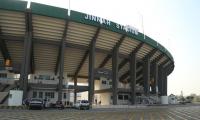Water security for citizens and sustainable management of water sources are the two poles of the water governance paradigm that ought to be employed as evaluation metrics for measuring the performance of governments.
The former bears existential significance and despite weak governance, citizens devise mechanics for access whereas the latter posits governance challenges that are being compounded by climate change. Equitable access to water with considerations for affordability, quantity, quality, and sustainability is the biggest challenge for our provincial and local governments today.
Citizens have a right to access water, but the actualisation of this right makes them consumers of water service thereby bringing the whole service delivery mechanism to the forefront of debate on the right. Local governments of Punjab and WASAs as service delivery agencies are responsible for planning, providing, and sustainably maintaining the services.
The structure of these organisations, more so of the local governments, is directly managed by the representatives citizens elect and the same public representatives approve of the tariff structure at the local level. Therefore, in ideal circumstances, citizens will equitably get water services by virtue of governance oversight by the representatives they elect and by the operational efficiency of local government staff whose salaries they pay.
Unfortunately, local governments of Punjab have been a subject of policy experimentation over the past two decades and for each successive incumbent of provincial government they have been either a low hanging fruit of reform or an object of perpetuation of political interests. As a result, both the administration and leadership of local governments struggle with maintaining service delivery standards.
Access to water is a right but service delivery bears a cost tag which is jointly shared by the government and citizens. Limited public information is available on the water supply service by the local governments of the province despite the legal provision of ‘proactive disclosure’ by the Punjab Transparency and Right to Information Act 2013. Service delivery data is surprisingly available and updated only on the websites of municipal committees that are recipients of development financing from a World Bank funded project.
Apart from the debate on aid effectiveness, one can safely say that it does push local structures and service delivery systems to address citizens’ rights and concerns. The subject of pricing water is a similar one where the development assistance by foreign agencies has time and again highlighted the need to address this issue.
Water is accessed and used by the citizens in a regulated and unregulated manner where the former is priced whereas the latter is termed as Non-Revenue Water (NRW). Importantly, both tangible and intangible costs of water are there but the share of priced water and NRW sets the basis for corrective actions. Available information indicates that nearly half the water being consumed is non-revenue whereas the priced water also needs serious attention.
Given the average household size and minimum daily water requirement suggested by the WHO, 37 gallons of water per household per day and 1,110 gallons per household per month is required for a family of seven members. We take the case of two intermediate cities – Wazirabad and Muridke – with varying examples of water supply and tariff structures.
One model is practised by MC Wazirabad that has flat monthly charges based on connection type – for its 8,378 domestic connections the MC charges Rs300 per month and for 47 commercial connections the monthly charges are Rs600. In 2024, the MC on average supplied water for seven hours per day to each type of connection while operating 15 tubewells. The ideal total collection by the MC for water supply should be Rs2,541,600 per month with the share of commercial consumers at merely Rs28,000.
The second model is that of MC Muridke, which has a more progressive water tariff structure with Rs50/marla/month but charges a flat tariff of Rs1,000 for commercial consumers. The reported number of domestic connections in Muridke is 5,424 and if we take an average of seven marlas for the house area then Rs350 is the monthly tariff for each house whereas only 12 commercial connections will yield merely Rs12,000 as collection per month. Rs1,910,400 will be the total estimated revenue against this head for an average water supply of eight hours per day per household through 17 tubewells operated by the MC.
Recovery of water charges is nowhere 100 per cent in the province and at best an MC has collected 80 per cent of its total bill. The provincial average of water collection charges does not surpass 40 per cent and that too in the context of only 60 MCs, out of a total of more than 200 local governments, issuing proper water bills to their consumers. MCs of the province need to calculate their costs of water supply covering the costs of employing human resources, water pumping / extraction costs, maintenance costs, and infrastructure costs.
The sum of these costs then needs to be compared with the water needs of the city and the availability of ground or surface water. We understand that an equitable supply of water may have to be subsidised but the subsidy has to be rational and based on sound planning for sustainable water supply.
As a first step, the local governments and city planners need to estimate the water needs of each city in Punjab. Subsequently, all water supply agencies of the province need to install bulk metres to estimate the volume of water being extracted or supplied in accordance with the city's needs.
Second, a more rational water tariff structure is needed that is based on actual consumption instead of existing models of approximation. Water metres ought to be installed with each connection and the baseline tariff for the WHO recommended 20 litres per person per day should be introduced whereas for all excessive consumption, a higher tariff needs to be levied. Only then can we get rid of the sore sight of car washings in our neighbourhoods.
It will be challenging for the finance-constrained local governments to procure and install city-wide water metres. Therefore, a phased approach may be adopted with multiple sources of financing. The provincial government can easily chalk out a plan for developing sustainable water supply systems and for the installation of smart metres with the technical and financial assistance of international development partners.
More than a technocratic problem, this is an issue of political will coupled with winning the trust of citizens. Public representatives of local governments and legislatures can help build trust and bridge the political gap as they may reach out to citizens for rationalisation of water tariffs and persuade for sustainable consumption.
The writer is a public policy analyst based in Lahore. He can be reached at: hamidmasud@gmail.com
Postman argues that “typographic mind” was yielding to “televisual mind”
Pakistan is well poised to meet opportunities that Artificial Intelligence will offer for developments in industries
Smog isn’t merely 'environmental' issue anymore, it is public health emergency, socioeconomic burden
As it evolves into Next Generation Air Force, PAF draws strength from its rich history and lessons learned from past...
Survey conducted in prisons highlights distinct patterns of crime shaped by socio-economic and demographic factors
Pakistan’s urban planning remains fixated on vanity projects, flyovers, underpasses, and highways







